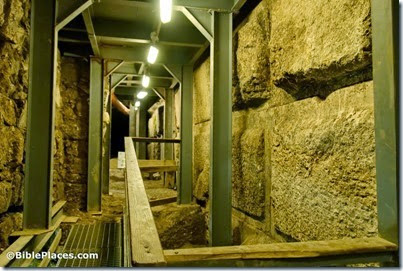I’ll start with my favorite article of the week: a review of recent excavations at the base of the Temple Mount’s Western Wall. You already know about the chisel, but you may not have heard about the smooth stone, the use of mortar, or the exposure of the valley floor. The Israel Hayom article failed to check with expert Leen Ritmeyer, but you can see his reaction on his blog.
Wet sand is the trick for cutting the pulling power in half when dragging pyramid stones across the Egyptian desert.
One chapter at a time, Ferrell Jenkins is taking us through a series in Visualizing Isaiah. This week he arrived at Isaiah 40 and he shares a couple of shepherd illustrations.
Now online: Leen Ritmeyer’s recent lecture, “Does the Byzantine Church at Khirbet el-Maqatir Reflect the Sacred Architecture of the Temple in Jerusalem?”
The Wall Street Journal summarizes events in the last few weeks that have led scholars to recognize the Gospel of Jesus’ Wife as a modern forgery.
The BBC has a video inside the new replica of King Tut’s tomb. Not everyone is pleased.

